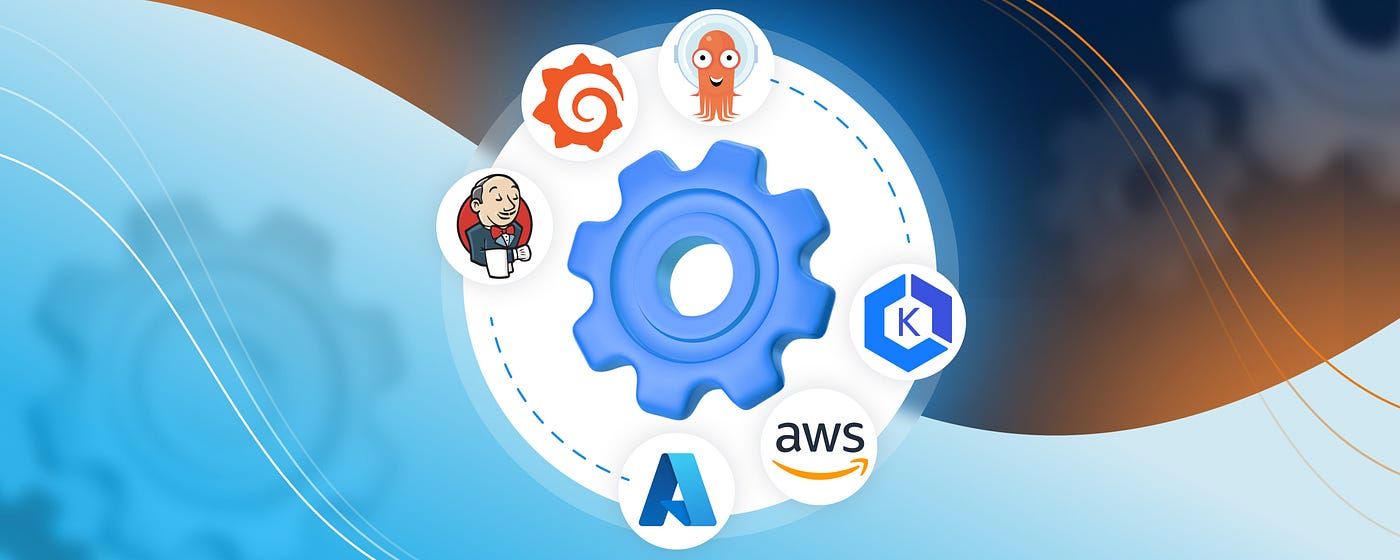The Top DevOps Tools Every Engineering Team Should Use in 2025

1) Harness: Harness provides a powerful suite of tools designed to streamline Continuous Integration and Continuous Delivery (CI/CD), ensuring seamless deployments with minimal risk. Its AI-driven approach automates complex tasks, optimizes pipelines, and reduces deployment failures—helping engineering teams focus on innovation instead of operational bottlenecks.

Key Features of Harness
Continuous Delivery & GitOps
Automate deployments with advanced GitOps practices and AI-powered rollback mechanisms. Harness ensures faster, safer, and more reliable releases by analyzing deployment health in real-time.
Continuous Integration (CI)
Leverage AI to optimize build times, detect failures early, and enhance developer productivity. Harness’s intelligent insights prevent costly errors and keep pipelines running smoothly.
Feature Management & Experimentation
Roll out new features safely with controlled releases and experimentation. Harness provides real-time insights into feature performance, allowing teams to mitigate risks before full-scale deployment.
Infrastructure as Code (IaC) Management
Manage cloud infrastructure efficiently with built-in security and compliance checks. Harness ensures consistency across environments, preventing configuration drift and security vulnerabilities.
Chaos Engineering
Proactively test system resilience by simulating real-world failures. Identify weak points before they impact users, ensuring high availability and reliability.
Why Choose Harness?
- AI-Powered Automation – Reduce manual effort with intelligent workflows.
- Faster Time-to-Market – Streamline deployments and accelerate releases.
- Improved Reliability – Minimize downtime with smart rollback strategies.
- Cost Optimization – Optimize cloud spend with automated efficiency recommendations.
2) Dash0: Dash0, an OpenTelemetry-native observability platform, is designed to bridge this gap. By leveraging standardized data collection and analysis, Dash0 delivers granular visibility across metrics, logs, traces, and resources, enabling engineering teams to detect and resolve issues faster.

Key Features of Dash0
Comprehensive Observability
Dash0 unifies metrics, logs, traces, and resources into a single platform, providing a holistic view of system health. This integrated approach eliminates data silos and enhances decision-making.
Resource-Centric Monitoring
Unlike traditional monitoring tools that focus on isolated metrics, Dash0 takes a resource-centric approach, allowing teams to monitor the components that impact performance the most—ensuring efficient root-cause analysis and troubleshooting.
Seamless OpenTelemetry Integration
Built with OpenTelemetry at its core, Dash0 supports vendor-neutral, open standards, making it easy to integrate with existing DevOps ecosystems. This ensures long-term flexibility and future-proof observability strategies.
Performance Optimization & Anomaly Detection
Dash0 continuously analyzes system performance, detecting anomalies before they escalate into critical failures. Real-time insights empower teams to optimize applications and maintain high availability and reliability.
Why Choose Dash0?
- Unified Observability – Centralized insights across logs, metrics, traces, and resources.
- Faster Troubleshooting – Resource-centric monitoring for pinpointing issues quickly.
- Open Standards & Flexibility – Seamless OpenTelemetry integration ensures vendor independence.
- Scalability & Performance – Designed for modern cloud-native and microservices architectures.
3) Piku: Piku, a lightweight, open-source deployment platform that lets you deploy applications to your own servers using just a git push command. Inspired by Dokku, Piku strips away unnecessary complexity while maintaining flexibility, making it an excellent choice for developers who prefer minimalistic and hassle-free deployments.

Key Features
Git-Powered Simplicity
With Piku, deployment is very simple.No need for complex CI/CD setups—just push your code, and Piku takes care of the rest.
Minimalistic & Lightweight
Piku is designed to be small and efficient, making it perfect for developers who don’t want the overhead of full-fledged Platform-as-a-Service (PaaS) solutions like Heroku.
Self-Hosted & Flexible
Unlike cloud-based solutions, Piku allows you to deploy applications to your own servers, giving you full control over your environment without vendor lock-in.
Supports Multiple Languages & Frameworks
Whether you’re deploying Python, Node.js, Ruby, or other languages, Piku handles the deployment process with minimal configuration.
Great for Small Projects & Personal Apps
If you’re working on side projects, prototypes, or lightweight applications, Piku provides a fast, no-fuss deployment experience that keeps things simple.
Who Should Use Piku?
- Developers who want a quick and easy deployment method.
- Small teams or solo devs looking for a Heroku-like experience without the costs.
- Anyone who prefers self-hosted solutions over managed platforms.
4) SSOReady: Single Sign-On (SSO) is a critical feature for applications that need seamless and secure user authentication. However, implementing SAML SSO can be a complex and time-consuming task, often requiring deep expertise in identity protocols.
Enter SSOReady—an open-source service that abstracts the complexities of SAML and enables developers to integrate enterprise SSO in less than a day.

Why Choose SSOReady?
Easy SAML Integration
SSOReady eliminates the need to deal with SAML request/response handling, certificates, and identity provider (IdP) configurations—allowing developers to focus on building their applications rather than wrestling with authentication protocols.
Works with All Major Identity Providers
Whether you're integrating with Okta, Microsoft Entra ID (Azure AD), Google Workspace, Auth0, or any other IdP, SSOReady ensures smooth compatibility, reducing friction for enterprise customers.
Fast Implementation
Traditional SAML integrations can take days or even weeks to complete. With SSOReady, developers can get enterprise SSO up and running in just a few hours—without the hassle of manual configuration.
Enhanced Security & Compliance
By offloading SSO implementation to a trusted, open-source solution, organizations can improve security, reduce authentication risks, and ensure compliance with enterprise authentication standards.
Open-Source & Developer-Friendly
Being open-source, SSOReady is transparent, customizable, and community-driven—making it a flexible solution for any development stack.
Who Should Use SSOReady?
- Developers who need a quick and painless way to add SAML SSO to their applications.
- Startups and SaaS companies looking to support enterprise customers with minimal development effort.
- Security-conscious organizations that want to enhance authentication while reducing implementation overhead.
With SSOReady, integrating enterprise-grade authentication no longer has to be a daunting task. Developers can focus on building great products, while SSOReady takes care of the heavy lifting of SAML authentication.
5) Parity: Parity is an AI-powered SRE tool, Parity automates incident investigation, acting as a first line of defense before engineers even step in. By proactively diagnosing alerts and suggesting remediations, Parity reduces downtime, accelerates recovery, and minimizes manual intervention—ensuring high service reliability with less operational stress.

How Parity Enhances Incident Response
Automated Root Cause Analysis
The moment an alert is triggered, Parity conducts an automated investigation, analyzing logs, metrics, and dependencies to pinpoint the root cause—eliminating guesswork and reducing Mean Time to Resolution (MTTR).
AI-Generated Remediation Suggestions
Instead of just flagging an issue, Parity suggests possible fixes based on past incidents, system data, and AI-driven insights—helping teams implement solutions faster.
Proactive vs. Reactive Incident Handling
Traditional SRE workflows involve waiting for an engineer to investigate. Parity flips this model, conducting early-stage diagnosis and offering actionable insights before on-call engineers engage.
Reduced Downtime, Increased Reliability
By automating initial response steps, Parity allows teams to resolve incidents faster, leading to higher service uptime and a smoother user experience.
Seamless Integration with Existing Systems
Parity easily integrates with monitoring tools, observability platforms, and DevOps workflows, making it a flexible addition to any SRE toolkit.
Who Should Use Parity?
- SRE & DevOps Teams looking to accelerate incident resolution and reduce alert fatigue.
- Enterprises & SaaS Companies that need high service reliability with minimal downtime.
- Organizations Scaling Infrastructure and seeking AI-powered efficiency in SRE workflows.